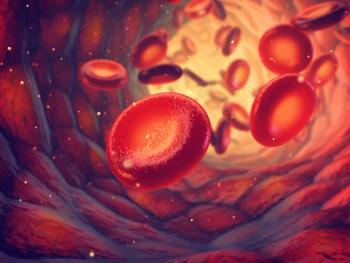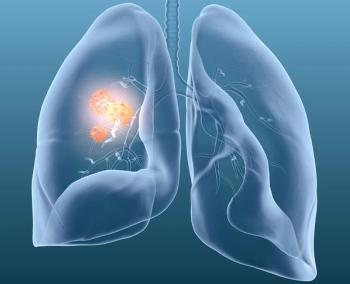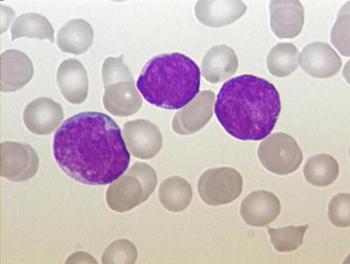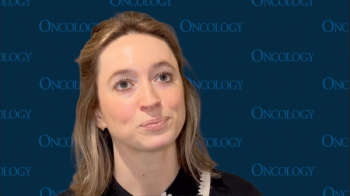
Oncology NEWS International
- Oncology NEWS International Vol 12 No 2
- Volume 12
- Issue 2
COX-2 Inhibitors Decrease Toxicity due to Chemotherapy; May Help Arrest Tumor Progression
HOUSTON-Inflammation is a common link between the toxicity of chemotherapy and cancer progression, and the possibility that anti-inflammatory treatments might help both is attracting more research attention. "Cancer is a nonhealing wound with persistent inflammation," Edward H. Lin, MD, said, quoting Harold Dvorak, MD, of Beth Israel Hospital in Boston. Dr. Lin is assistant professor of gastrointestinal medical oncology at the University of Texas M.D. Anderson Cancer Center in Houston.
HOUSTONInflammation is a common link between the toxicity of chemotherapy and cancer progression, and the possibility that anti-inflammatory treatments might help both is attracting more research attention. "Cancer is a nonhealing wound with persistent inflammation," Edward H. Lin, MD, said, quoting Harold Dvorak, MD, of Beth Israel Hospital in Boston. Dr. Lin is assistant professor of gastrointestinal medical oncology at the University of Texas M.D. Anderson Cancer Center in Houston.
"Pro-inflammatory factors in a wound are very similar to what cancer utilizes as a growth medium," Dr. Lin added. Furthermore, COX-2 is involved at every stage of carcinogenesis from hyperplasia to metastasis. COX-2 promotes tumor angiogenesis, induces tumor cell growth, and inhibits apoptosis.
In general, patients on capecitabine (Xeloda) have significantly less diarrhea, stomatitis, nausea, and alopecia than patients receiving fluorouracil (5-FU), but significantly more hand-foot syndrome (HFS), Dr. Lin noted. The manifestations of HFS are the classic signs associated with inflammation: rubor, turgor, calor, and dolor (redness, swelling, heat, and pain). This suggested to Dr. Lin and colleagues at M.D. Anderson Cancer Center that inhibiting COX-2, which is preferentially associated with inflammation, might have therapeutic benefits.
HFS Significantly Reduced
Dr. Lin reviewed records of patients at M.D. Anderson Cancer Center who had taken capecitabine with (n = 32) or without (n = 35) celecoxib (Celebrex) at 200 mg po bid for metastatic colorectal cancer. In data from the case-control study previously presented at the American Society of Clinical Oncology meeting, Dr. Lin found that adding celecoxib decreased the incidence of grade 2 or worse HFS from 34.5% to 12.5% (P = .037) and the incidence of grade 3 or worse diarrhea from 28.6% to 3.1% (P = .005). Median time to progression in a group of patients that had been pretreated with 1 to 3 different chemotherapy regimens increased from 3 months to 6 months (P = .002).
"Patients taking capecitabine for more than 6 months often develop fibrotic changes on the hands and feet," Dr. Lin said. "Adding celecoxib seemed to be able to prevent chronic HFS, with immediate pain relief and subsequent return of normal skin. We are currently collecting a group of patients who have developed HFS on capecitabine and will treat them with celecoxib."
New Data on Survival
At the colorectal cancer meeting Dr. Lin presented new data showing that the increased time to progression translates into a significant increase in median survival from 17 months to 28 months (P = .004) for the combination of capecitabine plus celecoxib. "Survival of 28 months compares very favorably with the current best median survival of 20 months accounted for by all active chemotherapy agents. This retrospective study certainly provides more food for thought," he said.
The survival benefit is thought to reflect a cooling of the chemotherapy-induced inflammation that paradoxically encourages tumor progression by providing tumors with growth factors. Inflammation is a depressingly common side effect of some of the most effective chemotherapy regimens (see
These problems are all associated with upregulation of COX-2. "Inhibition of COX-2 either with selective inhibitors such as celecoxib or of COX-1 may be able to help arrest tumor progression," Dr. Lin said. He suggested that inhibition of COX-2 might mimic antiangiogenic therapy by reducing the levels of mediators such as vascular endothelial growth factor (VEGF), fibroblast growth factor (FGF), and platelet-derived growth factor (PDGF).
Articles in this issue
almost 23 years ago
Some Activity for Gefitinib in Heavily Pretreated Breast Canceralmost 23 years ago
Brachytherapy Results Similar for Blacks, Whitesalmost 23 years ago
Dose-Dense Chemo Ups Survival in Node+ Breast Canceralmost 23 years ago
MR Spectroscopy IDs Breast Cancers, Node Involvementalmost 23 years ago
ODAC Wants More Data on Expanded Casodex Indicationalmost 23 years ago
SuperGen Submits First NDA Module for Pancreatic Cancer Drugalmost 23 years ago
Two Added to ONI’s Oncology Nursing Editorial Advisory Boardalmost 23 years ago
Bortezomib Active in Relapsed/Refractory Myelomaalmost 23 years ago
Telomerase Potential Cancer Biomarkeralmost 23 years ago
Developing Targeted Therapy More Difficult Than AnticipatedNewsletter
Stay up to date on recent advances in the multidisciplinary approach to cancer.

















































































